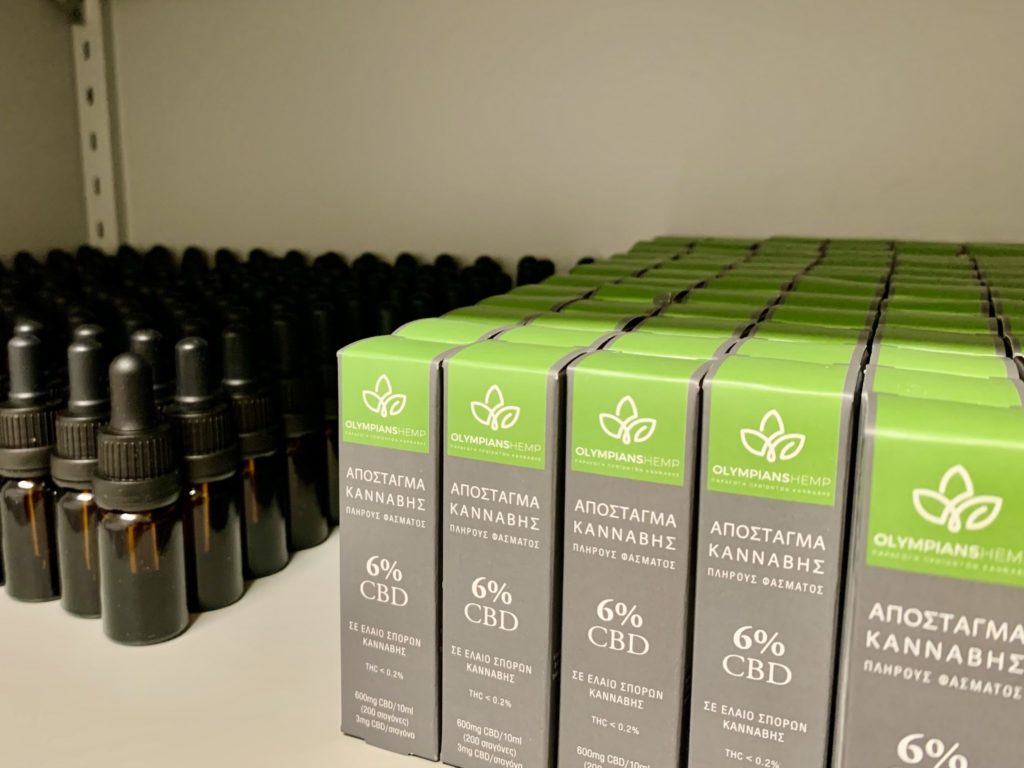TYPES OF CANNABIS
Cannabis is a genus of annual flowering plant that is divided into three distinct species: Cannabis sativa, Cannabis indica, and Cannabis ruderalis Janisch. The origin of the plant is located in Central and Western Asia but it can be easily cultivated worldwide in areas with temperate and dry climates.
Each species and variety of cannabis has a different composition and content of cannabinoids, the active ingredients of cannabis, resulting in different properties and characteristics. Thus, the different types of cannabis are used accordingly for industrial applications, medical purposes or recreational use. The cannabinoid compound to which the recreational, euphoric use of the plant is attributable is the Tetrahydrocannabinol (THC) which is classified at aromatic terpenoid compounds. All cannabinoids, most notably Cannabidiol (CBD) and Tetrahydrocannabinol (THC), have therapeutic and soothing effects on the human body, so their coordinated intake by humans is indicated for pharmaceutical purposes.
Cannabis sativa, a variety of which is Cannabis Sativa L with a THC content less than 0.2% cultivated by OlympiansHemp, is otherwise called industrial cannabis or hemp and is the most common type of the plant. Cannabis sativa is an annual, tall plant with spread branching that can reach a height of 4 to 6 meters with a stem diameter up to 10 cm. The varieties of industrial cannabis are extremely low in THC, with no psychoactive effect on the human body, and are therefore used exclusively in a range of industrial applications and nutritional, therapeutic products.
Cannabis indica is a wild species of the plant that is native to Afghanistan, Pakistan, and India. It is a shrubby, conical, annual plant that is noticeably more low (maximum height 2 meters), broad-leaved and dense branched than Cannabis sativa. The varieties of cannabis indica due to high THC content have a psychotropic effect on humans and are illegally cultivated exclusively for recreational use.
Cannabis ruderalis Janisch was first found in Siberia, is a native plant of many regions of Russia and the lowest (maximum height 70 cm), smallest and most resistant among the 3 species of the cannabis plant. It exhibits extremely low THC content and high CBD content, thus simulating the properties of Cannabis sativa and being used in similar applications.
CANNABIS IN GREECE
Cannabis and its properties have already been known in Greece since the antiquity. Eastern neighbors seem to have taught the ancient Greeks the cultivation and processing of the cannabis plant, which is reported for the first time in 450 BC. in a work by Herodotus. Through numerous references, found in various ancient Greek writings, the multifarious uses of the plant in Ancient Greece, as raw material of fabrics and ropes and therapeutic as well as recreational means, are now documented.
From the Ottoman domination to the end of World War I, the cultivation of cannabis in Greece was considerably limited due to the military conflicts and the enslavement on the one hand and the naval blockade and the increase in the price of grain on the other. A blatant exception is the decade 1860-1870 when the first concerted attempt of organized hemp cultivation in the history of the new Greek state took place.
Until the middle of the 20th century, cannabis was a major agricultural crop and an export product of Greece. Throughout the country, a total of 10 fiber processing units were in operation for the production of ropes, the most important of which is still preserved in Edessa. At the same time, private cannabis cultivation was also widespread in order to cover the needs of the household in clothing and utility items such as nets, sacks, etc. Cannabis cultivation was banned by law in Greece in 1957, following American pressures, in the context of the anti-drug campaign, but also because of the emergence and spread of other industries such as the cotton one and later the synthetic materials one, especially plastic.
Since the spring of 2016, according to ministerial decision, the cultivation of Cannabis Sativa L (containing less than 0.2% THC) in Greece has been legalized again. In the spring of 2018, the Greek Parliament also voted for the production of final medical cannabis products (Cannabis Sativa L with a THC content more than 0.2%).
USES AND APPLICATIONS
Hemp fiber is an extremely powerful and durable source for commodity production since it does not rot in contact with water and resists attack by microorganisms. Hemp fiber can produce the following:
- Canvas used on sailboats
- Floorings of boxing rings, and stages
- High-quality ecological paper (hemp is estimated to produce four times more fiber per acre comparing to trees, while its pulp does not contain the toxic by-products of cut wood)
- Woven fabrics, clothes, bags and sacks
- Ropes, twine, nets
- Insulating and building materials, chipboards (hemp fibers have excellent sound-insulating and heat-insulating properties)
- Sealing material for car coating
- The “hemp” of plumbing that serves to connect water pipes (consisting of cachets, broken or inferior fibers)
Hemp stems can be used as:
- bedding material for horses and small domestic animals.
It is 12 times more absorbent than long-grain wheat straw while it engages moisture and odors. At the same time, it is gentle and not irritating to animals and does not attract insects and rodents. Once it has been used it may be recycled into:
- fertilizer for horticultural crops and flowering plants.
Hemp seeds, which have an important nutritional value, can produce:
- Superfoods of high nutritional value for humans such as oil, flour, and cannabis protein
- Soap oil and cosmetic moisturizing care products
- Bird food and feed for other animals
- Paints and varnishes
The hemp flower carries the active ingredients of the plant known as the cannabinoids. They are proven to have therapeutic and soothing effects on the human body. The most important as well as beneficial cannabinoids are Cannabidiol (CBD) and Tetrahydrocannabinol (THC) while the cannabinoid extract from the flower can produce:
- Pharmaceuticals such as oil and crystal, which help drastically reduce and combat serious organic and mental illnesses
- Tea with a balancing and therapeutic effect on the functioning of human body
Hemp pulp from the plant processing residues can be used as:
- fuel for energy production


